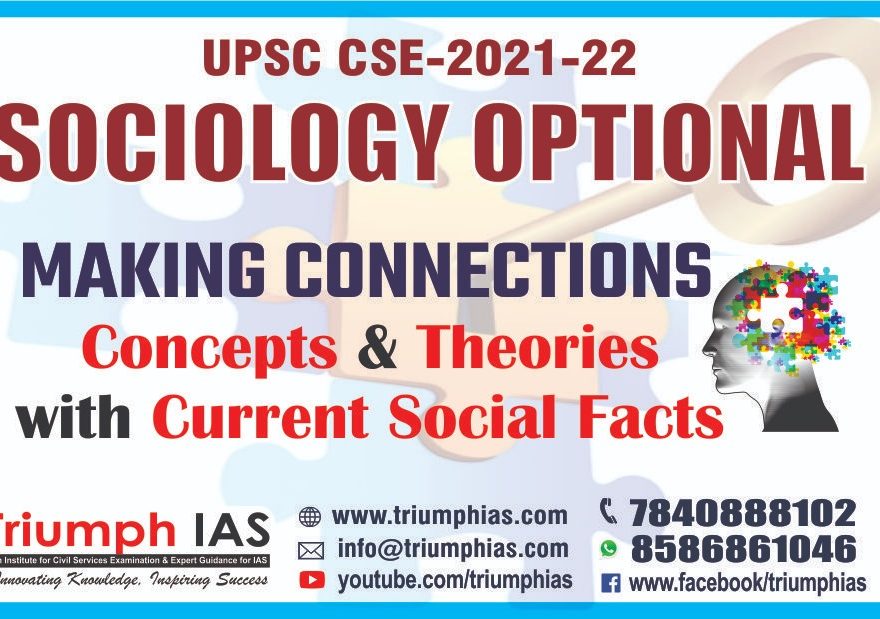Relevance: Sociology: Systems of Kinship : Family, household, marriage. Types and forms of family.
- Changes in the Aims of Marriage:
The main objective of Hindu marriage was Dharma Although Kama or sex was one of the aims of Hindu marriage, it was the least desirable aim. In recent years, the order of aims of marriage has undergone change Sex has become primary and Dharma has become least important aim to marriage. In this manner the aims and the basis of marriage are undergoing changes.
- Change in the process of Mate Selection:
As far as the selection of the bride and bridegroom was concerned it was the prerogative of the parents or the guardians This tradition of selecting the marriage partner for sons and daughters continued till the end of 19th century when the ideas of liberalism and industrialism were incorporated into Indian society as a result of the impact of Western culture.
A new trend is emerging in the process of mate selection among the middle and upper class educated youth in urban areas.
- Changes in the Rules of Endogamy and Exogamy:
There have been some visible changes in the matter of rules of endogamy and exogamy. The rules of Varna, caste and sub-caste endogamy, Gotra and Pravara exogamy have been banned by legislations.
Now we do not find restriction in cross-cousin marriages. Cross-cousin marriages were taking place but these were not very common.
Arya Samaj Movement has promoted inter-caste marriages. Inter-caste marriages, hitherto considered unthinkable, are now not only permitted but also encouraged. Besides the legislations, the freedom in mate selection has promoted inter-caste marriages.
- The Age at Marriage:
In course of time child marriage became the prevalent mode of marriage in India. Hence, child marriage was the practice to safeguard chastity and purity of females. The practice of child marriage was strong even in the 20th century.
For girls, the minimum age is 18 years and for boys 21 years. Marriage of boys and girls below the prescribed age has been made a cognisable offence.
- Changes in the Rites of Marriage:
Traditionally, Hindu marriage is a religious sacrament and the Hindu marriage can take place only through the performance of certain rights and rituals. Some of the most important rites and rituals connected with Hindu marriage are Kanya Dana, Vivaha Home, Panigrahana, Agni Parinayana and Saptapadi etc. But today the situation is that some changes have taken place regarding the rites and rituals of marriage.
- Change in the Stability of Marriage:
Traditionally, divorce was not easily granted and permitted in Hindu society. The hindrance on divorce made the institution of family and marriage stable and enduring. Due to the enactment of marriage and family legislations and many other factors the divorce rate in India has been steadily increasing.
The incidence of divorce is a clear indication of the fact that the institution of marriage is undergoing changes.
The stability of married life is gradually being affected. Marital instability is gradually increasing.
There was a time when a wife could not think of divorce. But now women have started taking resort to dissolution of marital bond.
- The Problem of Remarriage:
The old tradition of Kanya Dana prohibited the marriage of widows. The remarriage of widows was generally not favoured in Smritis. Although widow remarriage was in rare cases permitted, it was not regarded as sacramental as the first marriage was. The remarriage is not marriage once a maiden is given in marriage.
The Widow Remarriage Act, 1856 allowed widows to remarry if they liked.
In the post- independence era the number of widow remarriages has considerably increased.
- Dowry Systems:
The traditional form of marriage impl.es Kanya Dana in which the father of the bride provides jewels and ornaments to daughter at the time of marriage. It was only a token of love and affection.
Actually this was not a dowry which was being practiced in ancient India. In course of time, child marriage emerged and with this also emerged the necessity of providing a huge dowry because the selection of bridegroom became difficult in recent years; the problem of dowry has led to many problems namely suicide by the girls, malpractices by the father and humiliation of the father who cannot provide dowry.
- Marriage and Morality:
One of the most important values connected with Hindu marriage for boys and girls was chastity. The Hindu Sastrakaras have emphasised on pre- nuptial chastity of both boys and girls. They were not one-sided in their valuation of chastity but they placed equal value on the pre-nuptial chastity on the part of the male as well U is evident that elaborate rules were laid down for the sexual conduct of both boys and girls till his or her marriage.
Pre-marital and extra-marital relations were not allowed .Love was the consequence of marriage between boys and girls, and marriage was not the consequence of love.
In this regard, Kapadia has remarked. “The development of new mores in sex is generally presented in a society which has its roots in tradition and religious belief. Conventional sex morality cannot however stem for long the tide of a new awakening the need for a new concept of sex relationships is now as much as recognized by the older as by the younger generation only .this recognitions has not percolated to all layers of Indian society. Changes is hence slow and therefore less dramatic.”
Youths have started establishing sex relationship much before marriage; Brahmacharya Vrata has become irrelevant because of new values.
conclusion
To conclude Hindu marriage has undergone several changes. These changes have taken place in the institution of Hindu Marriage because of many factors, new norms and values In spite of all these changes, Hindu marriage is not considered as a social contract and it continues to be sacrament for Hindus. Mutual fidelity and devotion to partner are still considered to be an essence of marriage.


3 comments